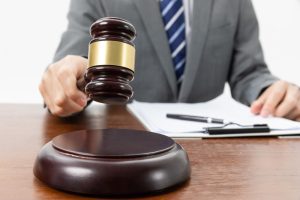According to the National Law Review, there are 9.1 self-driving car accidents for every 1 million miles driven. These numbers are gradually increasing when compared to traditional vehicles.
Beyond the rising number of accidents, self-driving cars introduce a range of new legal challenges. In traditional car accidents, the driver is typically responsible for any mistakes made on the road. In some cases, the manufacturer of the vehicle can be held liable as well.
In self-driving car accidents, on the other hand, determining who is at fault becomes much more complicated. Understanding these complications is crucial if you are involved in such an accident.
It’s always a good idea to hire a self-driving car accident lawyer who can help you navigate the complex legal landscape.
Parties Potentially Liable in a Self-Driving Accident Case
In self-driving car accidents, determining who is responsible can be challenging, as several parties might be involved.
The Driver
Even in autonomous vehicles, drivers are often required to take control in certain situations. If a driver is distracted, fails to intervene when needed, or is otherwise negligent, they can still be held liable for an accident, even though the car was in self-driving mode.
The Manufacturer
If a defect in the car’s hardware or design causes the accident, the manufacturer may be held responsible. For example, if the vehicle’s sensors fail or the automated system malfunctions, product liability laws could apply.
The Software Developer
Self-driving cars rely on complex software to make decisions. If the software is faulty or contains a bug that leads to an accident, the company that developed it could be liable for damages.
Maintenance Providers
Poor maintenance can also lead to accidents. If a service provider fails to properly maintain or update the car, they might share responsibility for the crash.
Complications with Proving Fault
Proving fault in a self-driving car accident involves more complexity than in traditional cases.
Multiple Liable Parties
Unlike conventional accidents where the fault lies with one driver, self-driving accidents may involve several responsible parties, such as the driver, manufacturer, and software developer. Determining liability requires a detailed investigation.
Technical Expertise
These cases often require technical experts to analyze the vehicle’s sensors, software, and mechanical systems. This adds both time and cost to the legal process, but it’s crucial to understand what caused the accident.
Data Privacy and Manipulation Concerns
Self-driving cars collect large amounts of data, which is essential to determining fault. However, accessing this data can raise privacy concerns and could be tampered with, further complicating the investigation.

Insurance Complications
Insurance claims involving self-driving car accidents are also more complicated than in regular cases.
Whose Insurance Applies?
It’s often unclear which insurance should cover damages in a self-driving car accident—whether it’s the car owner’s insurance, the manufacturer’s liability insurance, or the software company’s policy. This can lead to prolonged disputes.
Higher Premiums and Lengthy Claims Process
Insurance premiums for self-driving cars are typically higher due to the unknown risks. Additionally, the claims process may take longer, as investigations often involve multiple parties and require technical analysis to prove fault.









